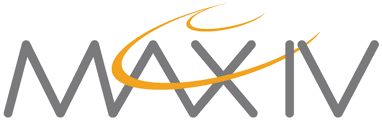- Home
- Materials
Filter
Sort
-
-
Filter Clear filters
-
-
Content provider
- MAX IV1
- Paul Scherrer Institute (PSI)1
- Show N_FILTERS more
-
-
-
Keyword
- PaNOSC31
- tomography26
- expands25
- tomwer22
- NEPHEWS project21
- data management20
- nabu20
- tomotools20
- FAIR18
- PaN16
- FAIR data15
- canvas15
- FAIR Data14
- synchrotron14
- Data reuse13
- Online Repository13
- wp3-ExPaNDS13
- Data mining12
- Photon and Neutron12
- discovery12
- Data management11
- Photon science11
- SciCat10
- metadata10
- wp2-ExPaNDS10
- FAIR Data, Workflows, and Research9
- TANGO9
- tango-controls9
- Data8
- Elettra synchrotron8
- Materials Science8
- NXtomo8
- NeXus8
- wp5-ExPaNDS8
- GoldenGATE Imagine7
- NMR7
- open data7
- synchrotron beamline7
- Data extraction6
- Data processing6
- EOSC6
- Nuclear Magnetic Resonance6
- Python6
- Tango Kernel Webinar6
- neutron research6
- neutron sources6
- volume6
- ICAT5
- VISA5
- data catalogue5
- life sciences5
- login required5
- ontology5
- CERIC4
- COVID research4
- Central European Research Infrastructure Consortium4
- Heritage Science4
- McStas4
- Neutron imaging4
- Open Data4
- Open Science4
- Synchrotron4
- TreatmentBank4
- data analysis4
- edition4
- neutron4
- persistent identifiers4
- spectroscopy4
- DMP3
- Data curation3
- EPR3
- Electron Paramagnetic Resonance3
- Global Biodiversity Information Facility3
- Materials Citation3
- Neutron scattering3
- Neutron science3
- PGAA3
- Prompt-Gamma Neutron Activation Analysis3
- PyMca3
- Reproducibility3
- Scientific Collections3
- Small Angle Neutron Scattering3
- Taxonomy3
- X-ray Diffraction3
- X-rays3
- XAS3
- battery research3
- catalogue3
- crystallography3
- data processing3
- doi3
- drug development3
- health3
- material characterization3
- neutron scattering3
- pid3
- projections3
- reduced frames3
- synchrotron control3
- taurus3
- Show N_FILTERS more
-
-
-
Difficulty level
- Not specified1
- Show N_FILTERS more
-
-
-
Resource type
- video1
- workflow1
- Show N_FILTERS more
-
-
-
Related resource
- MAX IV youtube channel1
- Show N_FILTERS more
-
- Show disabled materials
- Show archived materials

